My Dream Fish
 Scientific name:
Scientific name:
Thunnus maccoyii and Thunnus albacares
Size:
Both southern bluefin and yellowfin tuna grow to at least 2 m in length and reach weights of more than 150 kg, although fish of both species over 100 kg are relatively uncommon, especially in inshore waters. The much rarer central Pacific bluefin - a near identical fish to the giant Atlantic bluefin (Thunnus thynnus) of northern waters - grows to a weight of more than 350 kg, and any tuna over 200 kg taken in our waters are most likely to be representatives of this central Pacific species
Description:
The southern bluefin is a very heavily built tuna with a cylindrical body and short fins. It is blue-black on the back and bluish-silver on the belly, often with broken vertical white bars and dashes on the flanks and belly, especially when young. The fins and finlets are yellowish, but never as bright as those of the yellowfin tuna. However, the caudal keels on the tail wrist, ahead of the tail, are conspicuously yellow, especially in smaller fish.The yellowfin colouration is the most striking of all the tunas. Freshly caught or live specimens are blue to steel black on the back, silver to silvery-gold on the flanks, and silvery-white on the belly. A band of bright gold or iridescent blue (sometimes both colours, one above the other) runs along the upper flanks, separating the dark back from the lighter belly. The stomach area sometimes carries oval, colourless patches and vague, broken vertical bars of white or off-white. As its name implies, the yellowfin's fins are bright yellow, particularly the small finlets. However, the caudal keels, ahead of the tail, are dark or dusky. Larger yellowfin (over 30 or 40 kg) are characterised by extended, strap-like second dorsal and anal fins, sometimes called "sickles".
Fishing Techniques:
Southern bluefin and yellowfin tuna are taken using a range of angling techniques. These include trolling with lures - especially skirted, Konahead-style lures, pushers, jet-heads, rubber squid, feathers, jigs, minnows and flies - as well as live baiting, dead baiting, lure casting and even fly fishing. A favoured Australian technique for taking larger yellowfin tuna is to use un-weighted flesh-strip baits or whole and cut pilchards in conjunction with a berley trail of fish cubes. This is called cubing or strip baiting. Big tuna are extremely powerful and demand the best in tackle, rigs and gaffs. Most are taken on study overhead reels, short, strong rods and lines of 15 to 37 kg breaking strain.
Eating Qualities:
The southern bluefin tuna has dark, red meat with a relatively high oil content, and is highly regarded by the Japanese for use in raw fish sashimi or sushi dishes. The yellowfin's flesh is slightly lighter in colour and less oily, but also demands a high price on the sashimi market, as well as being rated just behind the albacore in terms of its cooked flavour. All tuna destined for the table should be killed by a solid blow to the head immediately after being brought aboard, and bled by severing one or more arteries. The carcass should then be cooled as quickly as possible using ice or an iced brine "slurry", before being eaten fresh or snap frozen for future consumption.
source: http://www.sportsfish.com.au







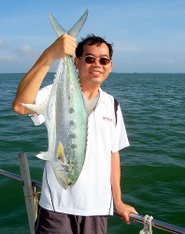
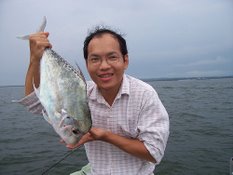
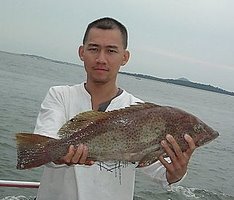
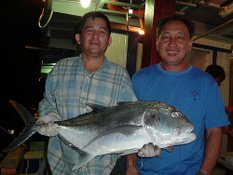
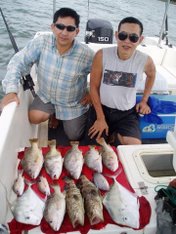
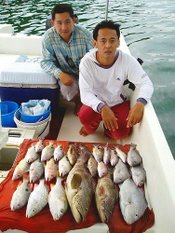
No comments:
Post a Comment